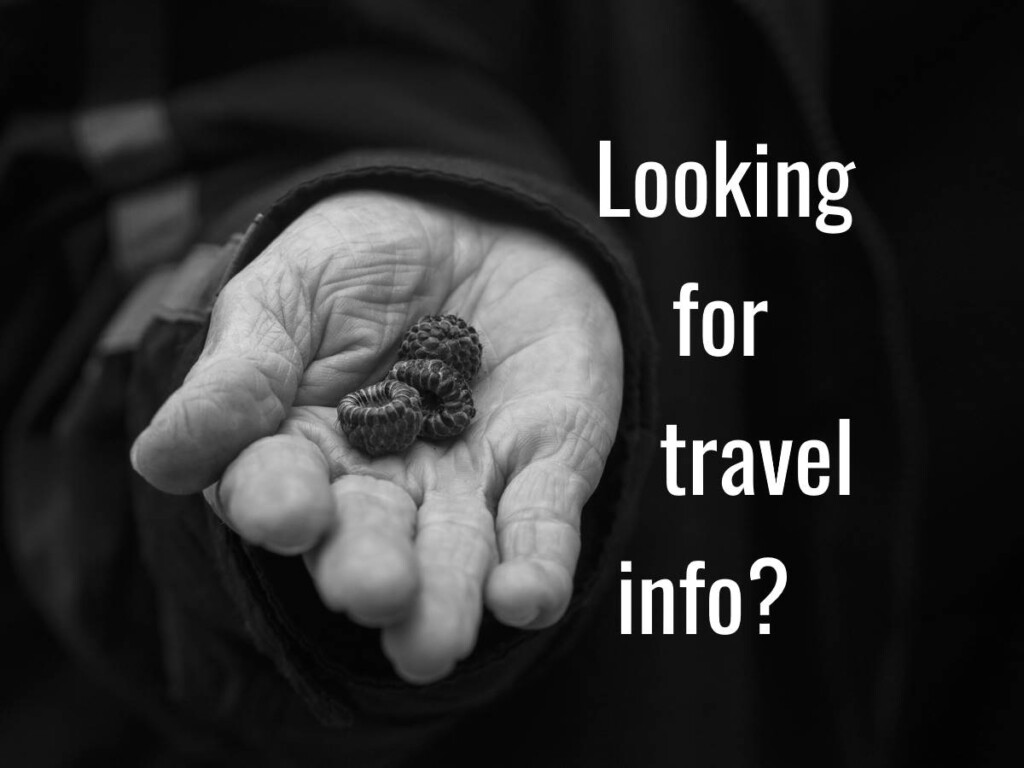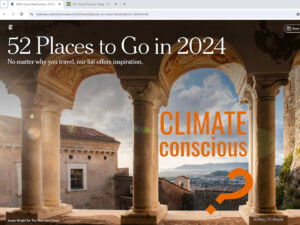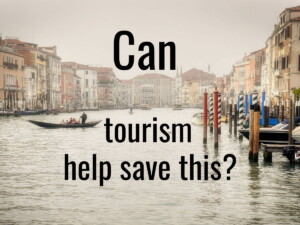Foraging for climate-conscious travel information: Where is our trusted guide?

Despite warnings of climate catastrophe, declarations of climate emergency, and the guilt and angst they stir up in many people, most of us still want to travel.
Herb Hiller sees the need for a trusted and authoritative source of climate-conscious travel & tourism advice.
It’s a “Good Tourism” Insight. (You too can write a “GT” Insight.)
The cities and the countryside of the Global North grew wealthy through colonial times. Riches extracted from the Global South made leisure travel possible.
The nations of the North became depositories of looted treasures that filled museums for educated travellers from each other’s countries to admire up close.
The industrialised world generated the most visitors and also welcomed the most.
We saw how travel & tourism makes significant contributions to national income and jobs; always in the places tourists come from, and often in the places they go to.
As well as investing in science, research, technology, finance, and globalism, the North also created the industrial revolution that led to the release of greenhouse gases.
Don’t miss other “GT” content tagged with
“Tourism and climate change”
Capitalism discounted the cost of waste from its industrial production and dumped it onto public lands, pumped it into oceans, and released it into the atmosphere.
So long as the seas, other sacrificial regions, landfills, and limited access freeways disadvantaged only the underclasses, the system held together.
But climate change has bitten the hand that feeds it.
Now, since COP27 in 2022, climate-conscious reform is finally being taken up by places that receive visitors in numbers as large as those that they generate — in the Global North — rather than leaving it to the Global South to cope with.
Our climate-conscious travel concerns are rising
Lay people are learning what scientists already know; that climate action calls for global buy-in.
While national policy makers dragged their feet and the tourism industry greenwashed ahead, the educated and well-off people of the Global North grasped two critical aspects of what climate action in travel & tourism entails:
- Tourism needs to turn away from sites most vulnerable to climate impacts. For example, all but subsidised underwriters are giving up on seashore armoring for hotels and luxury dwellings.
- Travellers need to factor climate action into their travel plans.
Moreover, they have learned that the least among us — catalysed by the murder of George Floyd — have to buy in to the new commitment to climate action lest they become virtual anarchists for hire by companies willing to drag action to the barricades and to their last egregious paydays.
But we still want to travel … How? Where?
It’s no surprise that in the COVID aftermath, after being locked down and with time to absorb more news about climate, the numbers for ecotourism are running ahead of tourism’s comeback more generally.
We want to travel. But how?
Greta Thunberg might inspire us to choose from a list of alternatives to air transport.
But to where?
Perhaps to places that intentionally adopt carbon-lowering actions and that hold themselves out to visitors for doing so; essentially what I call The Deep Nearby.
Also see Ken Scott’s “GT” Insight
“Why travel & tourism is wrong to embrace net zero”
In other words, we need to look for places to visit that can authentically demonstrate their actions; trending, for example, on food from local sources, on lodgings that scale to their communities, and on the many other ways that also correlate with climate action, such as diversity and equity.
Many places are transitioning into climate-conscious travel destinations.
When we plan our trips, and while travelling, it is vital that we talk to our destination marketing organisations, lodging operators, and restauranteurs about how and why we make our choices.
We need climate-conscious travel guidance
Expedia Group Media Solutions plus Skift Travel Research in 2022 reported that “90 percent of consumers look for sustainable options when travelling, but that 70 percent feel overwhelmed by starting the process of being a more sustainable traveller”.
Sustainability is about more than travelling with a bar of organic soap, so no wonder they feel overwhelmed.
We need a guide to climate-conscious travel values that is organised by trusted and authoritative counsellors. Most of the Expedia- / Skift-surveyed 90 percenters are somewhere along in the process of transitioning into climate-conscious travellers. They would find such a resource very useful.
But, questions:
- Who should become the authoritative counsellors?
- How are they chosen?
- For how small or large a region?
- How interactive an online presence do we need?
I’ll save my thoughts on these for a follow-up posting.
Agree? Disagree? What do you think? Share a short anecdote or comment below. Or write a “GT” Insight of your own. The “Good Tourism” Blog welcomes diversity of opinion about travel & tourism because travel & tourism is everyone’s business.
Featured image (top of post): Foraging for blackberries. What about for climate-conscious travel information? Image by Eduardo Jaeger (CC0) via Unsplash.
About the author

Herb Hiller, writer and climate action advocate at The Climate Traveler, has “progressed from travel insider to a solutions-driven critic of mainstream tourism”.
Mr Hiller has lived in the Caribbean region and the US states of Florida and Georgia, working much of his career on multi-modal mobility. He initiated the Caribbean Tourism Research Center in Barbados; led the revival of the Florida state bicycling and B&B movements; inspired the Great Florida Birding Trail; and wrote the cover story for Florida Trend in 1996 that called for the newly-established Visit Florida DMO to go green.
Two of Herb’s books have won top honours in their fields. A fourth is near completion.





